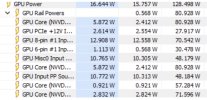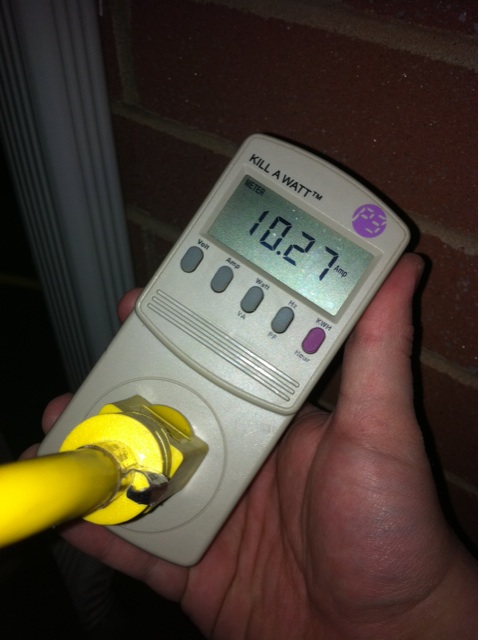Dave1001
Well-Known Member
I have an 1000w PSU with an RTX 3070 and a 5800x. the max power draw for the 3070 is somewhere between 220-250w, and the 5800x is rated for 140w? however I have Eco Mode 65w active, so it draws even less than that
I’m trying to calculate my power draw from the PSU between my cpu and gpu, but HWINFO has a lot of wattages on display and adding their maximums gives me an incredibly large number
the attached image is the GPU and when the watts spiked up under gaming load (the current watts were taken at idle so just pay attention to the Maximum column). they tend to spike at the same time and CPU does the same. adding up all those maximum values gives me a number between 600-700w…that doesn’t seem right?
furthermore, the CPU wattages listed are:
CPU Package Power
Cores 0-7 Power
CPU Core Power
CPU SoC Power
Core + SoC Power
and CPU PPT
if I then add all the maximum values from the CPU, combined with the GPU, my power draw is apparently 980w?? this can’t be right, since realistically you should only need a 600-750w PSU to run a 3070/5800x setup
what am I calculating wrong here? are all these wattages taken from the PSU, or add to the total power draw? or should I only be adding the CPU Package Power + GPU Power? I have no overclock or anything to drastically increase power draw, and this doesn’t even take into account my case fans so 980w total cannot be right. even if the CPU wattages spiked at different times, the total power draw here would still be around 800w. and the GPU alone is allegedly consuming up to 700w?
some insight would be appreciated, really confused here
I’m trying to calculate my power draw from the PSU between my cpu and gpu, but HWINFO has a lot of wattages on display and adding their maximums gives me an incredibly large number
the attached image is the GPU and when the watts spiked up under gaming load (the current watts were taken at idle so just pay attention to the Maximum column). they tend to spike at the same time and CPU does the same. adding up all those maximum values gives me a number between 600-700w…that doesn’t seem right?
furthermore, the CPU wattages listed are:
CPU Package Power
Cores 0-7 Power
CPU Core Power
CPU SoC Power
Core + SoC Power
and CPU PPT
if I then add all the maximum values from the CPU, combined with the GPU, my power draw is apparently 980w?? this can’t be right, since realistically you should only need a 600-750w PSU to run a 3070/5800x setup
what am I calculating wrong here? are all these wattages taken from the PSU, or add to the total power draw? or should I only be adding the CPU Package Power + GPU Power? I have no overclock or anything to drastically increase power draw, and this doesn’t even take into account my case fans so 980w total cannot be right. even if the CPU wattages spiked at different times, the total power draw here would still be around 800w. and the GPU alone is allegedly consuming up to 700w?
some insight would be appreciated, really confused here


